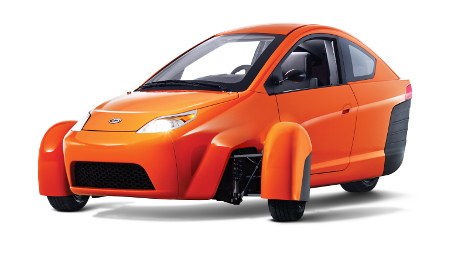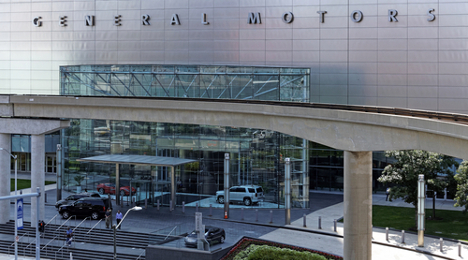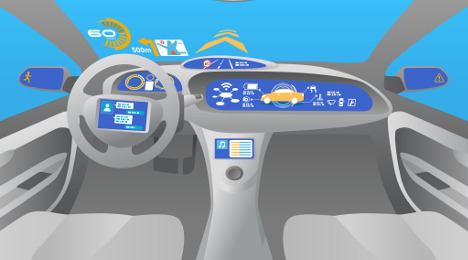What’s the best media to reach those customers in the market for a new car?
Well, when it comes to TV and the Web, these buyers in the market flock to broadcast news and sports programs, both live on TV and streaming online.
According to the J.D. Power 2016 U.S. Automotive Media and Marketing Report — Winter edition, sports continue to be a hot spot for auto advertisers to place their marketing material.
Though traditional TV is now facing competition from Internet content and video steaming services, according to the study, the top two types of shows new-vehicle drivers watch the most remains the same from last year: new/news programming out with front with 46 percent market share, followed by sports at 42 percent. Situational comedies came in at 33 percent, and dramas garnered 28 percent.
The study is based on a survey of 27,308 principle drivers of recently purchased or leased new vehicles.
"Sports may be one of the last remaining juggernauts in broadcast advertising, because it is the type of programming that people have a tendency to watch live," said Dave Sargent, vice president of global automotive at J.D. Power. "That is why automakers place so many commercials during sports programs — people are watching live and are likely to see the ads."
And for those auto marketers focusing on Web advertisements, among new-vehicle drivers, a significant 64 percent are using video streaming services such as YouTube, Netflix or Amazon Prime.
And this number jumps among the younger crowds. According to the study, drivers under 35 years old are more likely to use streaming video services (92 percent), followed by those between the ages of 35 and 74 (79 percent) and 55 years and older (49 percent).
Furthermore, 47 percent of new-vehicle drivers use their DVR to record programs and fast-forward through commercials — definitely something to think about for auto advertisers with TV spots.
So if TV is your focus, of the 23 sports measured in the study, pro football is, not surprisingly, the most frequently watched sport among new-vehicle drivers (42 percent), followed by college football (29 percent) and baseball (20 percent).
Interestingly, drivers of domestic brands, specifically Cadillac, Chrysler and Ram, tend to watch professional football more than drivers of Asian or European vehicles, according to the study.
Auto advertisers will be spending big on the upcoming Super Bowl on Feb. 7, and some will spend as much at $5 million for a 30-second spot.
"The Super Bowl is unique in that a large portion of the audience watches as much for the commercials as for the game itself," said Sargent. "Many of the more memorable commercials we've seen during previous Super Bowls have been from automakers."
Here are a few more stats from the report that might be beneficial for those planning auto advertising campaigns:
- The study found that certain types of television programming attract certain brand owners, so it is especially important to advertise to the target audience. According to th study, Scion and Mitsubishi drivers watch more adult animation shows, while Porsche or Jaguar drivers tend to watch financial programs. And for Chevrolet and Jeep drivers, they tend to watch reality/competition shows.
- The top TV shows among new-vehicle drivers are"The Walking Dead," "NCIS," "The Voice" and "The Big Bang Theory,” according to the study.
- New-vehicle drivers between the ages of 35 and 54 and those with a household income of $100,000 or more are most likely to hit the fast-forward button through TV commercials.
NADA University rescheduled a webinar titled, “Increase Profit Through Smarter Advertising,” a session aimed to help dealers attract high quality, profitable sales leads.
The free webinar with presenter Adam Armbruster, senior partner at ESA & Company, is now set for Feb. 10 at 1 p.m. ET. Armbruster will show examples of successful dealerships and how attendees can create a customized growth plan for their business.
“Learn how to attract high quality, profitable sales leads,” NADA University officials said. “Explore real case studies of successful dealerships and create a customized growth plan for your business.
“Armbruster will discuss how the ‘TierZero’ strategy increases net income and ways to improve your media marketing plan,” they added about the 30-minute training session.
Dealers can complete registration for the free webinar here.
Elio Motors — a new auto manufacturer entering the market — announced the launch of its first national television advertising campaign this week. Elio Motors has been on the radar of many watching the ongoing direct-to-consumer sales debate spurred primarily by Tesla Motors’ sales model because of Elio’s similar direct distribution plans.
Elio Motors, whose cars are still in development, has retail centers that will offer point-of-sale options; customers choose the options they desire; the order goes to one of seven marshaling centers, and the car is delivered to the retail center by 10 a.m. the next day.
Joel Sheltrown, Elio’s vice president of government affairs, argued the benefits of the direct-to-consumers sales model during the Federal Trade Commission’s Auto Regulation Workshop held last week in Washington D.C., during a panel discussion, titled, “Auto Distribution: Current Issues & Future Trends."
Both Sheltrown and fellow panelist Todd Maron, general counsel at Tesla Motors, agreed consumers are being harmed by states that bar direct distribution by automakers.
The new advertising campaign launched this week by Elio is geared toward continuing to build comsumer awareness for the company’s three-wheeled vehicle that is expected to get up to 84 MPG and sell for a base price of $6,800.
The company plans to start production late this year, and almost 50,000 people have made reservations to purchase an Elio vehicle. The company will produce from a former General Motors production facility in Shreveport, La.
The campaign includes 30- and 60-second TV spots, titled, “Own the Future.” The spots include detailed shots of the company’s P4 prototype, and also features founder and chief executive officer Paul Elio outlining his vision for the company. To see the 60-second spot, check out the video above.
The spots, which were created by ION Drive Films in Los Angeles, will air on national cable networks, including Animal Planet, ESPN News, ESPNU, Fox Business Network, Fox News, Fox Sports, National Geographic and Velocity.
"We are on a mission to change the world, and sharing our message with as many people as possible is an important objective to our long-term success," Elio said. "Our grassroots and digital efforts have helped create a strong – almost rabid – enthusiasm for our vehicle. As our funding situation continues to make progress, we are now in a position to share our message and create more fans through this national advertising campaign."
The company is currently in the midst of its first stock offering and has raise approximately $16 million. The offering will close on Feb. 1, and the funds will go to development of engineering and testing prototypes, which Elio calls the E-Series.
"The stock offering, the launch of the E-series and this advertising campaign are all tangible signs of progress," Elio said. "This project positively impacts many of the issues that will be top of mind in the 2016 presidential election — from job creation to environmentalism and American manufacturing strength. We are doing more than talking. We are doing something about it with relentless action every day. The momentum we continue to build is getting us closer to production."
Various areas around the world, including college campuses, cities, residential areas, and peer-to-peer platforms have already or are in the works to be affected by General Motors’ vehicle-sharing initiatives. On Thursday, these initiatives united under one new GM brand: Maven.
According to GM, Maven’s mission is to give customers access to highly personalized, on-demand mobility services. Globally, the Maven team has over 40 employees with experience in the connected-car technology industry as well as ride- and car-sharing experts from Google, Zipcar and Sidecar.
“GM is at the forefront of redefining the future of personal mobility,” said Dan Ammann, GM’s president. “With the launch of our car-sharing service through Maven, the strategic alliance with ride-sharing company Lyft, and building on our decades of leadership in vehicle connectivity through OnStar, we are uniquely positioned to provide the high level of personalized mobility services our customers expect today and in the future.”
Here’s a breakdown of Maven’s expanded global offerings, as listed by GM in its news release:
City: Maven is announcing that it is offering its car-sharing program to more than 100,000 people in Ann Arbor, Mich., initially focusing on serving faculty and students at the University of Michigan.GM vehicles will be available initially at 21 parking spots across the city.
- Additional city-based programs will launch in major U.S. metropolitan areas later this year.
- Maven customers will experience seamless smartphone and keyless integration with the vehicle. Maven customers use its app to search for and reserve a vehicle by location or car type and unlock the vehicle with their smartphone. The app also enables remote functions such as starting, heating or cooling and more. Customers can bring their digital lives into the vehicle through Apple CarPlay, Android Auto, OnStar, SiriusXM radio and 4GLTE wireless. Each vehicle will provide an ownership-like experience with the convenience of car-sharing.
- Maven pricing is simple and transparent and includes insurance and fuel.
- As Maven grows, the team will use innovative ways of connecting personally with customers. Ann Arbor Maven users will have direct access to Maven leadership and core team members via the messaging application WhatsApp to share their experiences, ideas and thoughts with the team as they help shape the Maven service.
Residential: In the first quarter of 2016, Maven will launch car-sharing services for Chicago residents in partnership with Magellan Development Group. Maven is also expanding its existing residential program in New York City (previously called Let’s Drive NYC) with Stonehenge Partners giving users on-demand access to vehicles and preferred parking options. Both programs combined will offer service to more than 5,000 residents.
Peer-to-Peer: Existing global initiatives include peer-to-peer car-sharing through the CarUnity market place in Germany. Nearly 10,000 users have signed up in Frankfurt and Berlin since mid-2015.
Campus: Various programs are running on GM campuses in the U.S., Germany and China to refine and test future Maven commercial offerings.
Karl Brauer, senior analyst at Kelley Blue Book, compared today’s automotive business environment to the early days of commercial Internet.
“The personal transportation industry in 2016 is feeling a lot like the Internet world of 1999,” Brauer said. “There's a massive collision occurring between start-ups and established brands, all of them jockeying for position in an uncertain world. The Maven launch will give GM broader reach in this dynamic atmosphere, but nobody knows which of these alternative transportation systems holds the greatest long-term potential. This is why we're seeing a shotgun approach coming from multiple automakers.”
Another KBB analyst, Jack Nerad, also the company’s executive editorial director, believes this is not only a learning experience but also a solid marketing opportunity for GM.
“While there is some debate over how important ride-sharing services will be in the future, there is no doubt that the top global car companies want to have exposure in the space and gain learnings from early adopters. A pilot program like GM’s Maven can not only provide those learnings but can also be a marketing opportunity, exposing GM vehicles to groups that might not otherwise consider them.”
Eighty million auto shoppers. That’s how many people that Cox Automotive — through the websites its companies manage on behalf of dealers, as well as via Autotrader and Kelley Blue Book — touched last month alone.
That’s according to Mark O’Neil, Cox Automotive Software’s chief executive officer, while speaking with American International Automobile Dealers Association president Cody Lusk on the topic of Cox Auto’s digital reach in the automotive space during Tuesday’s AutoTalk Series.
And that reach has expanded since Cox Auto’s acquisition of Dealertrack Technologies, which O’Neil is formerly the CEO of. He expanded on how that agreement came to be, which he said involved a two- to three-year courtship.
“I’d say, in a short sentence, the reason it came together is that I think we both concluded that we were better together than apart,” O’Neil said. “We had a much broader suite of solutions than we ever would have had individually. And those solutions that we both represented individually, when put together, were not only very complimentary but would let us impact the industry much more significantly in a combined way than either one of us could have done individually.”
So what are O’Neil’s plans, now at the head of Cox Automotive Software? Let’s go back to that huge number of shoppers that are impacted by the Cox Auto’s various outlets on a daily basis — and the data trails they leave behind.
“We’re talking about a huge amount of customer information that we’re beginning to collect and we’re beginning to understand,” O’Neil said. “And the importance of that is we think as we start to aggregate this data and we start to analyze it, we will very readily understand consumer behavior, perhaps better than any other technology company in the automotive space. Because we have more data, by far, than any other player. I mean by multiples, whether it’s three times, five times, ten times, depending what player you look at, we are by far the largest consumer-engagement company from a data side.”
This statement led Lusk to ask the question that many individuals in the industry are probably thinking quite regularly; Is there anything else that Cox Auto wants to buy?
“At this stage of the game, I would say there are no holes in the offerings. Certainly nothing substantive,” O’Neil said. “If you said, ‘What about CRM? What about websites? What about DMS?’ Any of the big holes have been completely plugged. We have terrific offerings.”
O’Neil then immediately jumped into another hot topic that is on the minds of everyone in the industry looking into the future as anticipated catalysts — self-driving vehicles. And the Cox Auto Software leader made some hints at what we may be able to expect in the future in terms of the company’s involvement in the automotive technology landscape.
“And really, as the autonomous vehicle evolves more, there may be new technologies that are more appropriate for us to acquire than to build ourselves,” he said. “On the same hand, we are staying very close to OEMs. We had an OEM approach us recently saying that they want us to sit down to talk about a five- to 10-year plan in technology. They wanted to share with us their vision for technology and figure out how we can work together to deliver things like a virtual test drive, a much more autonomous or self-directed purchase process within a store environment.
“How could we use touch screens and technology within stores to make a much more engaging experience? I think, for the most part, the OEMs are going to have us on their radar and involve us way ahead of how they would have traditionally involved us, which is very much after the fact,” he continued. “Now we’re going to get ahead of the game with them. I think that’s going to help us close any gaps by planning in advance and starting to build technology.”
But what about staying on-top of the industry’s technology landscape. What if new “holes” appear in Cox Auto’s coverage?
“But should we miss anything particular or if a new piece of technology pops up that we think is very exciting, I think the nice part is that Cox has a terrific balance sheet and enormous resources,” O’Neil said. “They think very long term, in terms of five-, 10-, 15-year plans. And I think they’ll give us the capability to acquire anything that we think makes sense for the portfolio that we don’t have today.”
One interesting avenue that you can plan on seeing Cox Auto take in the near future is a bundling of its offerings, especially within the technology space and between its various offerings.
“We do anticipate doing more bundling, particularly in the software arena,” he said. “We’re just starting to think about the concept — in fact we’re going to pilot this year with a group that will test a rewards program amongst Cox more broadly. So that, you know, maybe today you’re primary user of Manheim or Autotrader and you don’t use software very much. You might be able to earn reward points from that that you can use toward software purchases. Or on the flip side, maybe you’re a very heavy software user and you’re not a big user of some of the media services like Autotrader or KBB or Manheim or NextGear or some of our other assets within Cox Automotive. Those rewards points could go that way.”
CDK Global announced Friday that it is enhancing its Third-Party Access (3PA) Program with expanded participation from Cox Automotive’s variety of solutions.
According to CDK, the aim of the agreement is to allow dealers the ability to more easily access their vital data and to ensure reliable and secure management of that data.
"At CDK, we understand that an ecosystem exists where our dealer clients utilize many third-parties for a variety of services," said Bob Karp, CDK’s president, Automotive Retail North America. "The 3PA Program was built to enhance integrations, allow secure data access and provide transparency to the types of data being utilized. We believe that allowing data to flow in a consistent, secure and transparent fashion is beneficial to dealers across the industry. Cox's participation in the 3PA Program demonstrates our joint interest in supporting a responsible ecosystem for all dealers."
Here’s the list of Cox’s solutions currently available via CDK’s 3PA program, as listed by the company:
- Service offerings for both Xtime and ServicePro, including appointments and inspection
- CRM offerings for VinSolutions and Dealertrack
- Inventory merchandising and analytics via vAuto, HomeNet, Dealer.com and KBB
- Marketing Services from VinSolutions and Dealertrack
- Dealertrack F&I offerings, including Desking and Menu
Mark O’Neil, chief executive officer of the Cox Automotive Software Group, elaborated on his company’s participation with the 3PA program.
"We are pleased to be working with CDK to enable deeper integration of data to help dealers run their dealerships more effectively," O’Neil said. "We are committed to ensuring that our mutual dealer clients have uninterrupted access to the solutions they rely on today."
Here are the tenets of CDK’s 3PA Program, as listed by CDK Global:
- Helping to prevent the corruption of data: When data corruption occurs, it can be costly and time intensive to fix. Vendors certified by the 3PA program have protocols in place to help make sure data integrity remains intact and dealers can focus on their day-to-day operations.
- Managing secure access: Using a CDK-approved interface, dealership employees can spend less time doing unnecessary data entry and benefit from increased security.
- Improving data syndication transparency: Dealers can also actively monitor access to their data and see where their data is being syndicated.
To learn more about the CDK Global, click here.
When you’re driving down the road, how many of the cars in motion around you are being physically driven by fellow humans? More often than not, all of them.
Thinking of an answer to this question, today, may seem quite silly. By the time our millennial readers are old and gray, however, it won’t be.
It’s well known that a variety of auto manufacturers and outside technology companies are preparing for the day that autonomous driving becomes mainstream.
In fact, a small percentage (8 percent) of the 175 automotive executives in 21 countries that IBM surveyed in its Automotive 2025: Industry without borders study think autonomous vehicles will be in mainstream use as soon as in the next 10 years. A much larger percentage (38 percent) think they will at least be in limited use in the mainstream market.
“But how does that affect my dealership today?” you may ask.
Well, there are plenty of autonomous features that are currently hitting the mainstream — and consumers want them. The technologies may not be driving the cars for us yet, but with lane-departure warnings, autonomous braking, and guided cruise control, it’s safe to say we’re perhaps not that far from it.
Autotrader recently presented the findings of its 2016 In-Vehicle Technology Shopper Influence Study at the 2016 International Consumer Electronics Show (CES) and a not-so-surprising percentage of consumers would like more autonomous features in their vehicles.
After surveying a panel of over 1,000 vehicle owners online last year, Autotrader found that 70 percent of the consumers surveyed are more likely to consider a vehicle with autonomous features, such as parking assistance, collision avoidance and automatic braking.
One interesting finding, fleshed out by Autotrader’s associate research manager Rachelle Petusky, is that these in-car technologies are changing what many consumers perceive to be a luxury vehicle.
“When we ask consumers about what defines a luxury vehicle, traditionally in the past consumers have broken it out by automakers that play in the luxury space, such as Audi or BMW,” Petusky said. “But technology’s really changing the game, and non-luxury vehicles are starting to be viewed as a luxury vehicle because of the technologies offered in the car. Things like Wi-Fi, lane change assistance, collision avoidance are helping consumers perceive non-luxury cars as luxuries.”
Since this is the second year that Autotrader has conducted this study, Auto Remarketing asked Petusky what the biggest change Autotrader has seen seen in consumer expectations over the last year.
Petusky pointed to the 77 percent that want a car with all of the technology features they want regardless of car color.
“Probably the biggest change that we saw was the fact that technology is becoming even more important than car color,” Petusky said. “Car color, I think, has been a part of a huge conversation. It still is very relevant in the purchase decision, but technology is definitely going to have more of an impact now than it did last year.”
While Autotrader finds that the majority (60 percent) of the consumers surveyed think self-driving vehicles are a dangerous idea, there are plenty that are more than willing to pay extra for the new technologies that are out today.
Forty four percent of those surveyed said they would pay up to $1,499, which Petusky says is a bit of a “magic number” in the technology package pricing game, for an in-vehicle concierge service. And 65 percent said they would switch brands to get the features they want.
On that note of branding, while Petusky says that in the immediate term it isn’t that cost effective to upgrade used vehicles with some of the new features that are coming out, the used cars that are most popular in the future will be heavily dependent on who adapts what technologies in their new vehicles now.
“But I think as automakers and technology companies figure out how to make it more cost-effective, it is going to start shifting consideration,” she said. “We’re already seeing some consumers that are shopping for new cars that are going to switch brands if the technology that they want isn’t in the car that they want.
“So I think even as people are looking at used cars, it may change which used car they’re considering depending upon which manufacturer is earlier to the game to introducing new technologies in their cars.”
These new technologies are also expected to not only change how automakers certify used vehicles in the future, but also impact the value that used cars retain.
“I think there’s definitely certain things that they’re going to have to check to make sure they’re functioning properly,” Petusky said. “Our sister company, Kelley Blue Book, is actually seeing that vehicle technology is impacting the valuation price of used inventory.
“I think that vehicles that are in good or excellent condition that have that additional technology in the car, it’s just going to be a way that they can ask for a higher price point and that inventory is going to move faster compared to certified inventory that doesn’t.”
Petusky also thinks that dealers and aftermarket companies that can add some of the more affordable new technologies, especially backup cameras, to older vehicles, can reap the benefits.
“That’ll really be a way to differentiate themselves from other dealers,” she said.
There is one feature that customers don’t necessarily care for their vehicle to have completely integrated: navigation. Fifty seven percent said they would rather manufacturers focus on better integration with their smartphones, while 39 percent said they would prefer the navigation system on a smartphone rather than one built into the vehicle.
“We definitely see it continuing to swing toward people wanting to just use the navigation system that’s in their phone,” Petusky said. “But they are wanting that to easily integrate into the dash. Some of the other apps and functions that people are doing on their smart phones now they are willing to surrender to the dash.”
With more than 235 model options in the new-vehicle marketplace, customers shopping in that arena are a bit spoiled for choice. Understanding what customers are drawn to, and, perhaps more importantly, turned off by, can be what sets a good car apart from a great car.
That’s where the annual J.D. Power Avoider Study comes in, and this year its analysis has shown an increased concern for vehicle reliability.
According to the study, which surveyed nearly 26,500 owners who registered a new vehicle in April and May of last year, 55 percent said that vehicle reliability was a leading reason for their purchase, up from 51 percent in the previous year’s study.
Looking at it from the opposite angle, 17 percent said perceived reliability was a chief reason why they avoided a certain vehicle, versus 14 percent the previous year.
"Though vehicle reliability and durability have improved significantly over the years, they remain a vital consideration for consumers," said Dave Sargent, vice president, quality practice, J.D. Power. "With so many auto recalls in the news and challenges with the introduction of new technology, consumers are even more attuned to the expected reliability of new vehicles.
“This impacts which models consumers avoid and which ones they ultimately purchase,” he continued. “Bad news can tarnish an automaker's reputation in an instant, yet, can take years to build back up. Automakers need to convince consumers of the true reliability of their vehicles so it is not a reason to avoid selecting a particular model."
Above reliability, exterior and interior styling still remain the top two most frequently cited reasons for buying a vehicle.
Lower gas prices also appear to have made an impact on consumer preferences, as J.D. Power points out that 51 percent of shoppers factored in fuel economy when purchasing their vehicle in 2015, down from 55 percent in the previous year.
Although nothing new, another issue that has stuck around is the fact that some shoppers tend to change brands because they simply want to try something new.
"This is a major challenge for auto marketers," Sargent said. "In the auto industry, building consumer trust, loyalty and advocacy is paramount to ongoing success. However, there are so many great vehicles available to consumers that merely satisfying your customers is simply the cost of entry.
“To truly succeed, automakers must keep their exterior and interior designs fresh, ensure competitive performance and fuel economy levels, offer an array of advanced technology and achieve an excellent reputation for vehicle reliability."
Here are a couple more key findings from the report, as listed by J.D. Power:
- Car Buyers Doing Less Window Shopping: Since 2012, new-vehicle buyers are considering fewer models and shopping fewer dealers. On average, buyers physically shop only three models, one of which they buy.
- Domestic Brands vs. European and Asian Brands: There remains a significant disconnect between perception and reality regarding the reliability of domestic brands compared with European and Asian brands. Avoidance of domestic models due to reliability concerns (24 percent) is nearly twice that of European (13 percent) and Asian (12 percent) models. In reality, the actual reliability of most domestic models is competitive with that of their import competitors.
Strategic Marketing Services has been working hard over the last nine months to ensure optimum data security for its dealer clients.
The marketing firm announced today they have completed the certification process in the Reynolds Certified Interface (RCI) program from Reynolds and Reynolds.
The company explained that the RCI Program provides for a secure and reliable data exchange between Strategic Marketing products and a dealer’s Reynolds dealership management system.
Todd Strause, chief executive officer and president of Strategic, said, “As we continue progressing into a business environment where data security has become so important, we believed the best move for our clients was for Strategic Marketing to become certified in the RCI Program. Since receiving certification, customer response has been very positive, and, quite frankly, has provided a feeling of relief given the numerous security breach stories involving other industries that are in the news.”
According to the company, the Reynolds Certified Interface (RCI) provides the following, as listed by the company:
- Enhanced data security and faster data access from a Reynolds system.
- Reliable and consistent push and pull of data.
- More time for Strategic’s team members to focus on customer service rather than on technical data integration issues.
- A faster and simpler way for customers to do business with Strategic Marketing.
It was announced in early December that three new automotive domain extensions were about to hit the market. That day has come, and Cars Registry announced .Car, .Cars and .Auto are now available to the general public.
The early access period for the domains kicked off Tuesday morning, and it will run through Jan. 20. This period gives dealerships, manufacturers and other businesses the opportunities to secure their .Cars, .Car, and .Auto Web addresses for a one-time premium fee before access broadens, the company explained.
Company management said short, geographic and keyword domains, such as 1.Car, Detroit.Auto and Compact.Cars are expected to be registered early.
Since the domains are available to the general public now, Web addresses can be secured at authorized retailers, such as GoDaddy.Cars and NetworkSolutions.Cars.
This early access period follows a successful trademark-only period for the domain extensions. Hundreds of automotive industry registrations have come in already, including Mercedes.Cars, Toyota.Cars, Honda.Auto, Mini.Cars, Smart.Car, Mitsubishi.Auto, and Bentley.Auto.
"The number of manufacturers, suppliers, and Fortune 100 companies that have already adopted these automotive-specific domains is a testament to the industry's embrace of the future of automotive marketing," said Mike Ambrose, chief operating officer of Cars Registry. ".Cars, .Car, and .Auto allow businesses to become automotive authorities while upgrading their old, clunky URLs."
Frank Schilling, co-founder of Cars Registry, said, "The 8-day EAP window is a once-in-a-lifetime opportunity for dealerships to stake their claims to the Internet's most valuable real estate and stand out from their competitors.
"Domains that were impossible to get in the past – like LA.Cars, TX.Car, and NYC.Auto – are now available to the dealership that places its order first,” he added.












